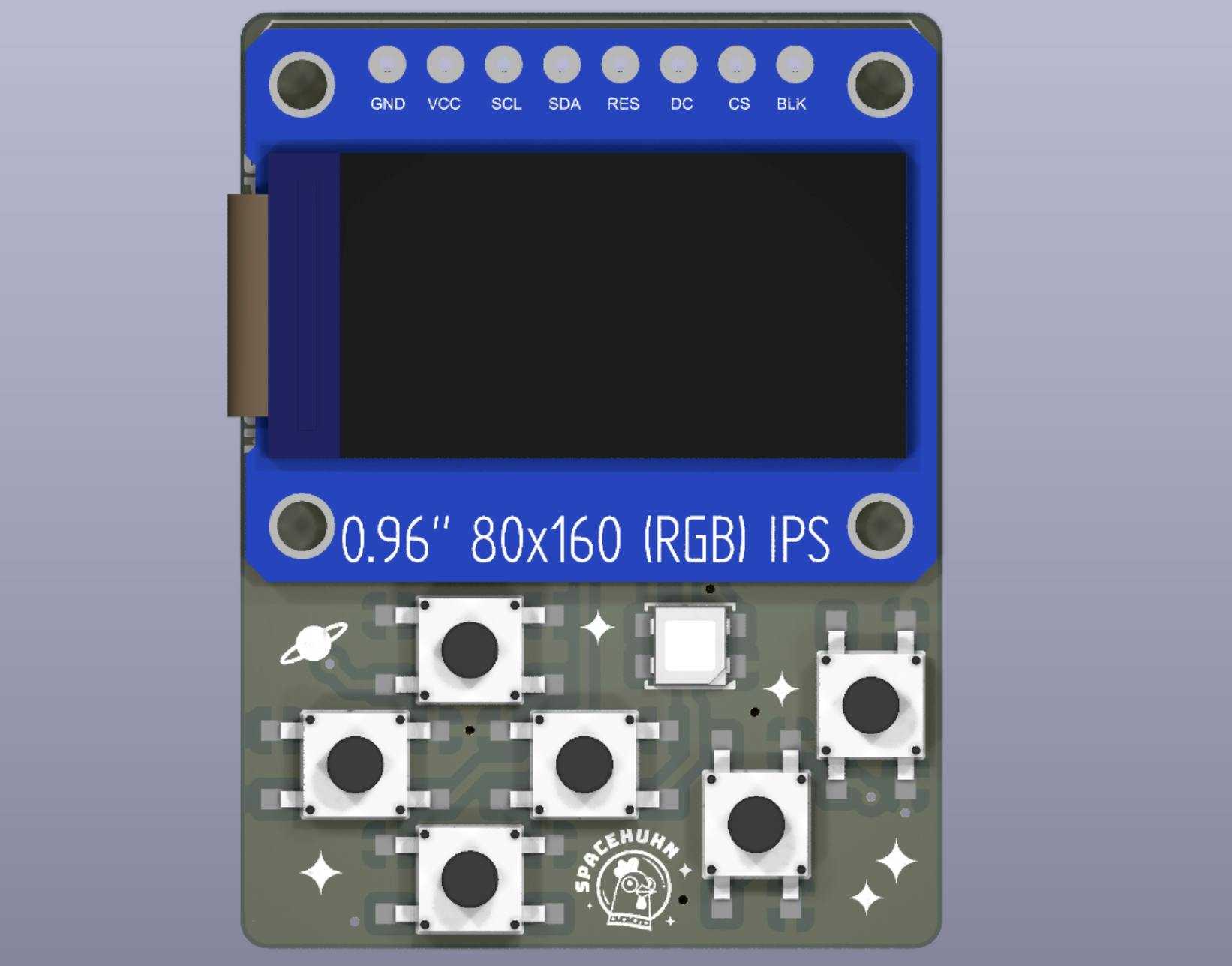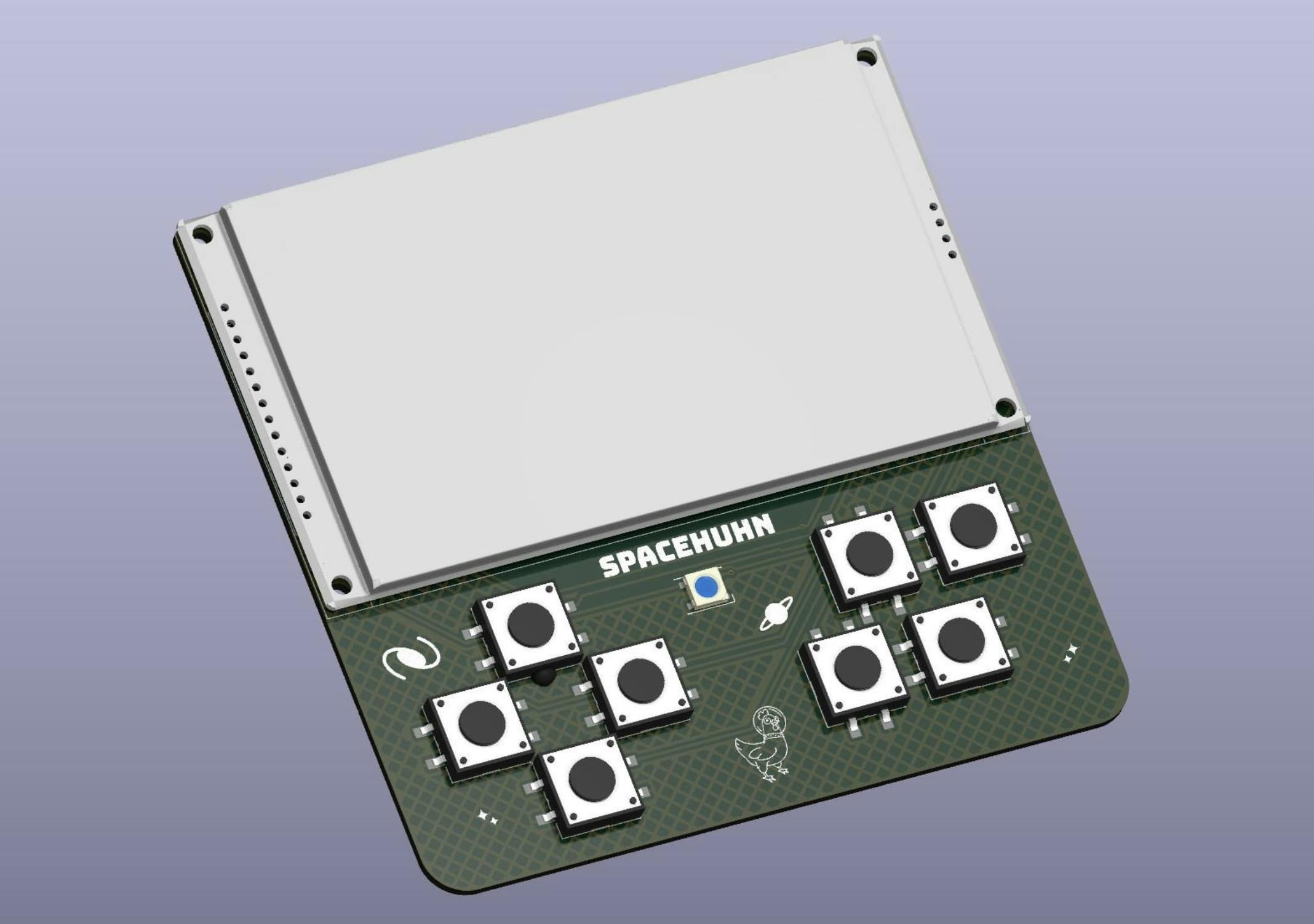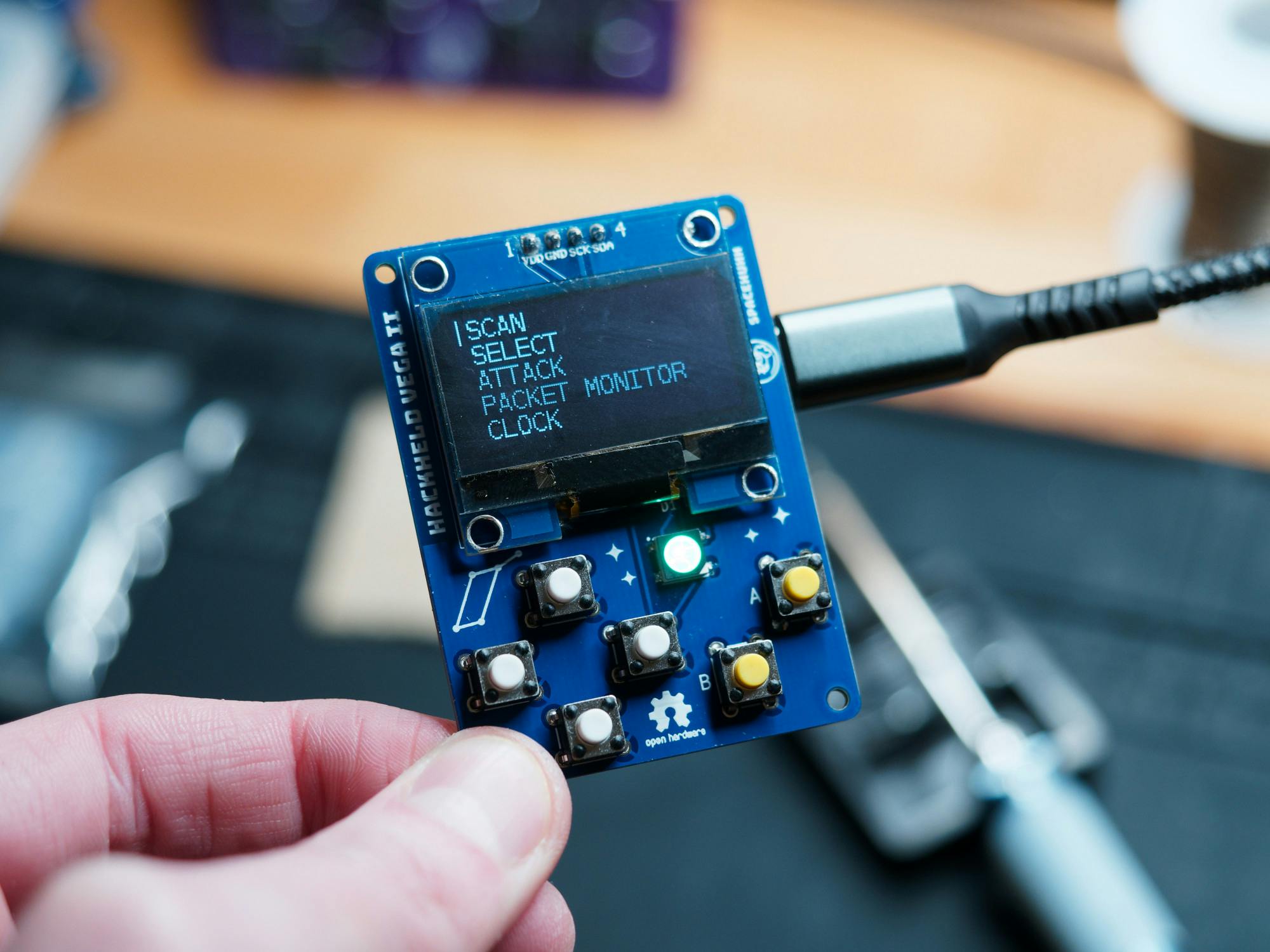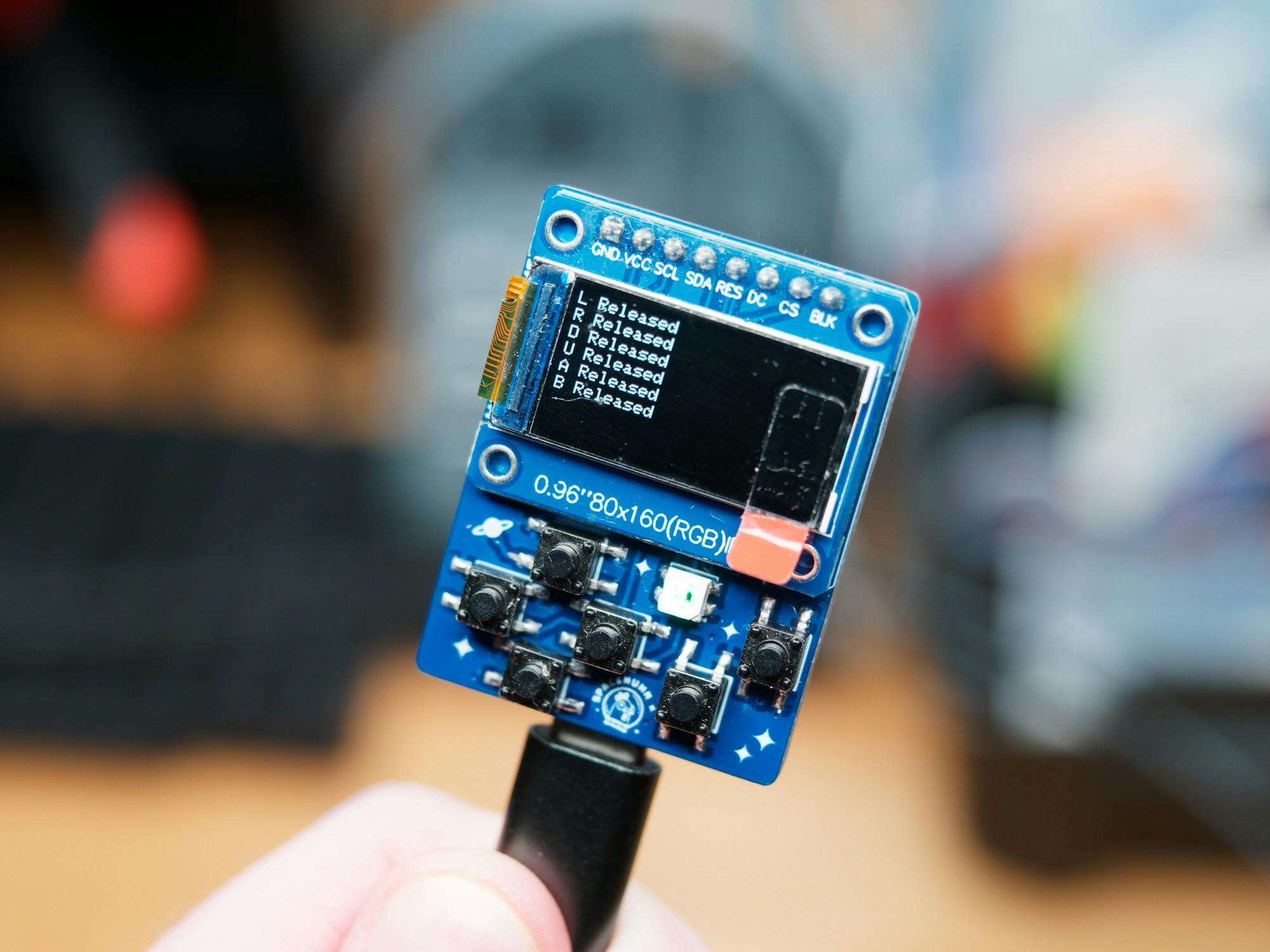The HackHeld is a DIY open-source hackable handheld I released in 2021. It's a simple PCB design that you can use to build your own Deauther.
I originally envisioned more than one design but unfortunately lost interest in the project at the time. However, now that I've invested more time into hardware design, I felt compelled to give my old design ideas another chance.
Here's what I've learned from it. 😊
My Progress
At first, I was unsure about the display choice. So I went ahead and ordered a bunch of LCDs. I might have overdone it when I decided to buy one of each size I could find. 😅

The OLED screen I've used for the HackHeld Vega is great, but it only comes in 0.96" and 1.3". So I wanted to try out some LCDs, which come in various sizes and resolutions. Of course, this makes it a lot harder to choose. But experimenting is what this whole endeavour is for. So I started designing!

I made a mini version using a 0.96" LCD.

And I made a gigantic 4" version because I couldn't not use the largest LCD I had just bought.

I also updated the Vega to make it smaller and fix some design flaws.
Design Choices
One thing to remember is that the whole idea behind the HackHeld Vega was to make it as easy and cheap as possible. This means using components that are easy to source from marketplaces such as AliExpress, eBay, or Amazon.
It also means using development boards and display breakouts, as they are easy to solder and use.

Some people have criticised this choice, but the HackHeld Vega was never meant to be a product for mass production. It's an open-source DIY project for beginners. The barrier of entry is intentionally low, with all associated disadvantages. Those who know how to solder ribbon cables and SMD components don't need a project like this. They can make their own Deauther without help.
And while I don't want to restrict myself to these rules, I applied the same dev board approach to the new designs to see how far I could get given the limitations.
Results

I'm most happy about the updated Vega design. Although I still have to design a new case for it.

The mini HackHeld is cute, and I like the form-factor. But it's not easy to solder, so I think I'll turn this design into a fully custom-made product without the breakout board approach. This way, I can add battery support and other cool features. And it can still be a DIY project for those who like to train their SMD soldering skills.

And the XL version - I honestly don't know what to do with it. It looks absolutely stunning. But I don't have any cool firmware for it yet. So it feels like a project I will have to put on pause to pick it up later when I have another project to combine with. The gigantic design has a lot of disadvantages for beginners also. The PCB is a lot more expensive, and the LCD is almost $20. Not to mention the feather board I used to drive this many buttons and add battery support.
Summary
Making handhelds is fun!
They look cool, and dev boards and breakouts drastically reduce cost, development, and assembly time. But it comes with a few disadvantages. For example, the HackHeld Vega does not have battery support. Of course, you can hack something to add it, but it's not ideal.
I will release the updated Vega design and add it to my store as soon as it's finished. But the other designs need a lot more time and thought. As of right now, I have no firmware for them. It's a cool-looking piece of hardware but completely useless. So I will work on other projects to make something interesting that makes sense to combine with these cool handheld designs.
I hope this little insight into my work process was interesting to you! 😊

